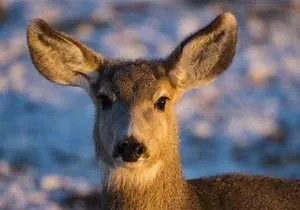credit- KDWPT
PRATT – Chris Lituma, a post-doctoral research associate at the University of Tennessee’s Institute of Agriculture, had no idea a fleeting trip to Kansas would result in a monumental discovery. Lituma was leading a group of students through a multi-state field study, including a stop in Scott City. Friend, and Kansas-native, Mike Hudson, had recommended Scott State Park just north of Scott City to Lituma as a good place to go birdwatching – a hobby of Lituma’s for the past 11 years. Upon arrival, Lituma began helping students identify the various birds, but one bird in particular was no ordinary migrant.
“The students asked me ‘hey, what’s this bird?’ and I briefly looked at it and assumed it was a black-headed grosbeak,” said Lituma.
Students then looked up the grosbeak in a field guide to find it was not the same bird they were looking at.
“At that point, I took another look at the bird and almost immediately realized this was no grosbeak, this was something very special; something rare.”
Lituma thumbed through one of his field guides but was unable to find the family of birds he thought the bird belonged to. He then grabbed a National Geographic field guide and was able to narrow his identification down to three birds. After a brief discussion with the students, everyone was in agreement that they were looking at a piratic flycatcher.
Hailing from as far as Argentina, piratic flycatchers are tropical birds belonging to the genusLegatusand are the only species to hold this classification. They are strongly migratory birds, and have been known to fly out of range, but rarely as far as North America. According to the American Birding Association (ABA), less than 10 of these birds have been recorded in the U.S. If Lituma’s sighting is accepted by the Kansas Bird Records Committee, it will be the first record for Kansas and the farthest northerly record of the bird, as well.
Scott State park manager, Greg Mills, said the sighting has brought in nearly 75 birders from 13 states, including Virginia.
Although the bird has yet to be seen at the park again since its last sighting at 12:30 p.m. on Sunday, May 10, experts believe the bird could still be in the Sunflower State.




